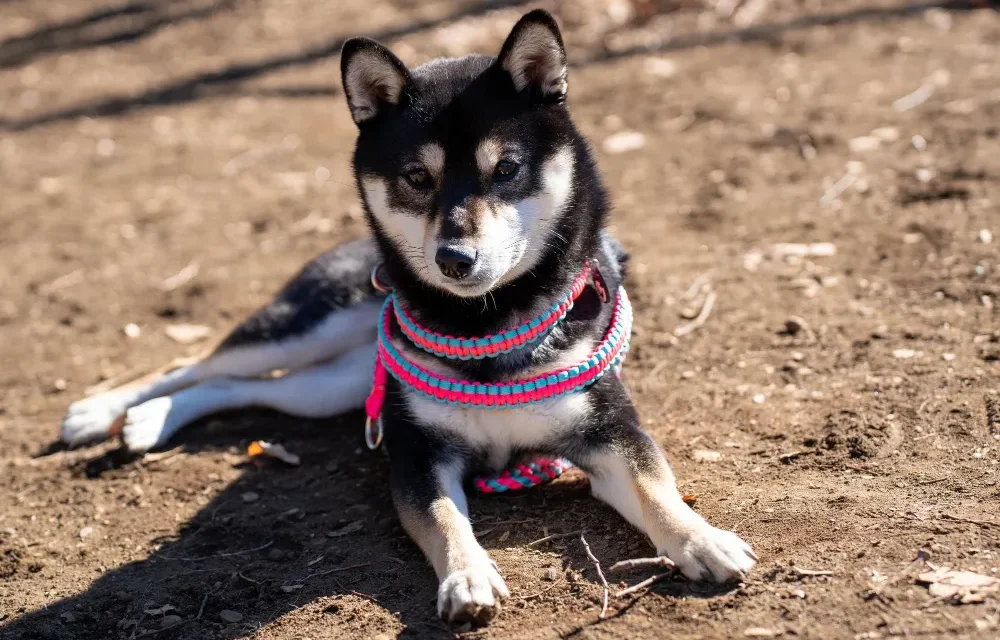Ever wondered how old is the Shiba Inu breed? Here’s a mind-blowing fact: these adorable fox-like dogs have been padding around Japan for over 2,000 years! While your modern Shiba might spend their days perfecting the art of selective hearing and dramatic sighs, their ancestors were busy hunting wild boar in ancient Japanese mountains.
The Shiba Inu isn’t just another popular dog breed on social media. This Japanese companion represents one of the world’s oldest and most primitive dog breeds, with a lineage that stretches back to antiquity. Their survival through centuries of change speaks volumes about their resilience and adaptability.
But here’s what makes it even more fascinating: not only is the breed incredibly ancient, but individual Shiba Inus have also achieved remarkable longevity. The oldest Shiba Inu dog on record lived to an astounding 26 years old, nearly doubling the average lifespan of most dog breeds.
In this article, we’ll explore the incredible history of the Shiba Inu breed, dive into their impressive lifespans, and share the amazing stories of record-breaking senior Shibas who’ve captured hearts worldwide.
How Old is the Shiba Inu Dog Breed? Ancient Origins in Japan?
The Ancient Beginnings
Archaeological evidence suggests that dogs resembling modern Shiba Inus existed in Japan as early as 300 BC, making them roughly 2,300 years old. Some experts believe their origins could stretch back even further, potentially to 7000 BC, when the first dogs arrived in Japan with early human settlers.
These early Shibas weren’t pampered pets lounging on sofas. They were hardy working hunting dogs in Japan’s rugged mountainous terrain. Their compact size, agility, and fearless attitude made them perfect for tracking small game like birds, rabbits, and occasionally larger prey like wild boar.
Cultural Significance Through the Ages
The history of the Shiba Inu breed is deeply intertwined with Japanese culture and spirituality. The word “Shiba” itself has multiple meanings in Japanese; it can refer to brushwood (possibly describing their red coat color or their ability to navigate through dense undergrowth), or it might come from an archaic word meaning “small.”
Throughout Japanese history, these dogs were more than just hunting companions. They were considered symbols of good fortune and loyalty. Samurai warriors often kept Shiba Inus, appreciating their courage and independent spirit that mirrored their values.
Near Extinction and Recovery
The breed faced its darkest period during World War II. Bombing raids, food shortages, and a devastating post-war distemper epidemic nearly wiped out the entire population. By the war’s end, only three bloodlines survived: the Shinshu Shiba, Mino Shiba, and Sanin Shiba.
Dedicated Japanese breeders worked tirelessly to save their national treasure. In 1936, the Shiba Inu was designated as a Natural Monument of Japan, providing official protection and recognition. This designation helped preserve the breed for future generations and established breeding standards that continue today.
Modern Recognition
The Shiba Inu’s journey to international recognition took centuries. While beloved in Japan for millennia, the breed didn’t reach American shores until the 1950s. The American Kennel Club finally recognised the Shiba Inu as the number one companion dog in Japan in 1992, making it the newest addition to the Non-Sporting Group at that time.
Shiba Inu Lifespan: Built to Last
Average Lifespan Expectations
The typical Shiba Inu lifespan ranges from 12 to 16 years, with many dogs comfortably reaching the upper end of this range. This longevity is particularly impressive when you consider their active lifestyle and spirited personality.
What makes Shibas such long-lived companions? Their status as a primitive breed means they’ve retained much of their original genetic diversity. Unlike many modern breeds that have been extensively modified through selective breeding, Shiba Inus have maintained the robust health characteristics that helped their ancestors survive for thousands of years.
Factors Influencing the Age of Shiba Inu
Several key factors contribute to the impressive Shiba Inu lifespan:
- Genetic Heritage: As one of the oldest breeds, Shibas have avoided many of the genetic bottlenecks that plague newer breeds. Their diverse gene pool contributes to overall health and disease resistance.
- Size Advantage: Weighing between 17-24 pounds, Shibas fall into the sweet spot where they’re large enough to be robust but small enough to avoid many size-related health issues that affect giant breeds.
- Natural Selection: Centuries of survival in harsh Japanese mountains naturally selected for the healthiest, most adaptable dogs. This evolutionary pressure created a breed with exceptional survival instincts and physical resilience.
- Active Lifestyle: Shibas were bred for endurance and activity. Regular exercise throughout their lives helps maintain cardiovascular health, joint mobility, and mental sharpness well into their senior years.
The Oldest Shiba Inu Dogs on Record
Record-Breaking Longevity
When discussing Shiba Inu age records, one name stands above all others: Pusuke. This remarkable Japanese Shiba Inu lived to be 26 years and 9 months old, earning him the Guinness World Record as the world’s oldest living dog before his peaceful passing in 2011.
Pusuke’s incredible longevity wasn’t just luck. His owner provided consistent care, including a healthy diet, regular exercise, and lots of love.
While Pusuke holds the record, other Shibas have also lived long lives. Kabosu, the Shiba Inu behind the famous Doge meme, reached 18 years, demonstrating that with proper care, Shibas can thrive into their senior years, even those who became internet icons. Several other Shibas worldwide have reached the 20+ year mark, showing that exceptional longevity isn’t uncommon in this breed.
What Makes These Dogs Special?
These record-holding seniors share several common characteristics:
- Consistent daily routines that included regular exercise and grooming
- High-quality nutrition throughout their lives
- Strong bonds with their human families
- Regular veterinary care and preventive medicine
- Mental stimulation through ongoing social interaction
Tips for Helping Your Shiba Inu Live Longer
Nutrition for Longevity
A proper diet forms the foundation of a long, healthy life. Feed your Shiba high-quality dog food appropriate for their life stage, and maintain consistent feeding schedules. Avoid overfeeding, as obesity can reduce lifespan by up to two years.
Consider adding beneficial supplements like omega-3 fatty acids for joint health and cognitive function, but always consult your veterinarian first.
Exercise and Mental Stimulation
Shibas need both physical and mental exercise throughout their lives. Daily walks, play sessions, and training activities keep them engaged and healthy. As they age, adjust intensity but maintain consistency.
Puzzle toys, new experiences, and continued socialisation help keep senior minds sharp and engaged.
Preventive Healthcare
Regular veterinary check-ups become even more important as Shibas age. Annual visits for adults and bi-annual visits for seniors help catch potential issues early when they’re most treatable.
Stay current with vaccinations, dental care, and parasite prevention. These preventive measures help avoid serious complications that could shorten your dog’s life.
Environmental Factors
Create a stable, loving environment with consistent routines. Shibas thrive on predictability and can become stressed by frequent changes.
Maintain a safe living space free from hazards, and consider age-appropriate modifications as your dog becomes a senior.
The Secret to Shiba Inu Longevity
Genetic Advantages
The impressive Shiba Inu age records aren’t just a coincidence. This breed’s ancient origins and minimal human interference in their development created dogs with exceptional genetic health. Unlike breeds developed for specific appearances, Shibas were selected primarily for function and survival ability.
Cultural Influence
In Japan, the traditional approach to pet animal care emphasises natural diets, regular exercise, and deep emotional bonds between dogs and families. This holistic approach to pet ownership has contributed to the exceptional longevity seen in many Japanese Shiba Inus.
Breed Characteristics
Several inherent traits contribute to Shiba longevity:
- Natural cleanliness reduces disease risk
- An independent nature means fewer stress-related health issues
- Moderate size avoids many genetic problems
- High intelligence allows for better adaptation to changing needs
Conclusion
So, how old is the Shiba Inu breed? At roughly 2,300 years old, these remarkable dogs represent one of humanity’s longest partnerships with a canine companion. Their ancient wisdom, combined with modern veterinary care and loving homes, has produced some of the most impressive Shiba Inu age records in the dog world.
The stories of Pusuke and other senior Shibas remind us that with proper care, these incredible dogs can be our faithful companions for well over a decade, and sometimes much longer. Their longevity isn’t just about good genetics; it’s about the deep bond between human and dog that has existed for thousands of years.
Whether you’re already sharing your life with a Shiba Inu or considering adding one to your family, remember that you’re not just getting a pet, you’re becoming part of an ancient tradition that stretches back through millennia of Japanese history.




